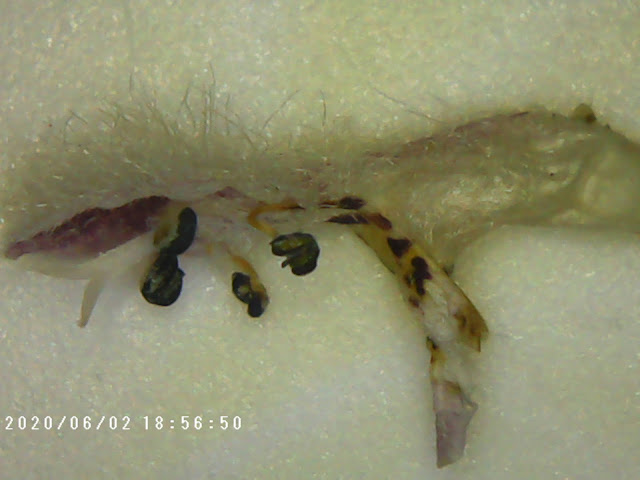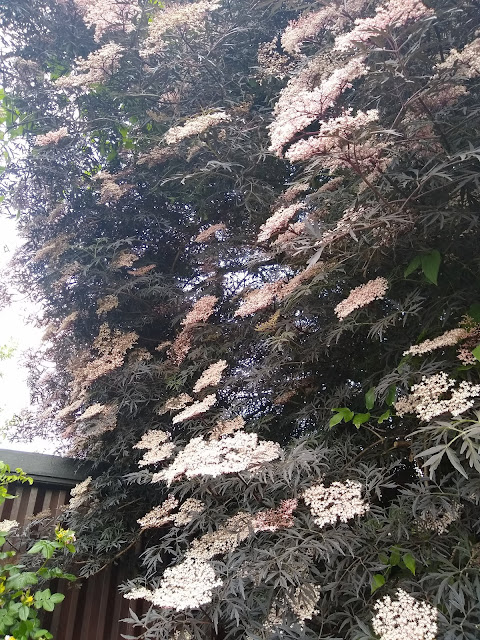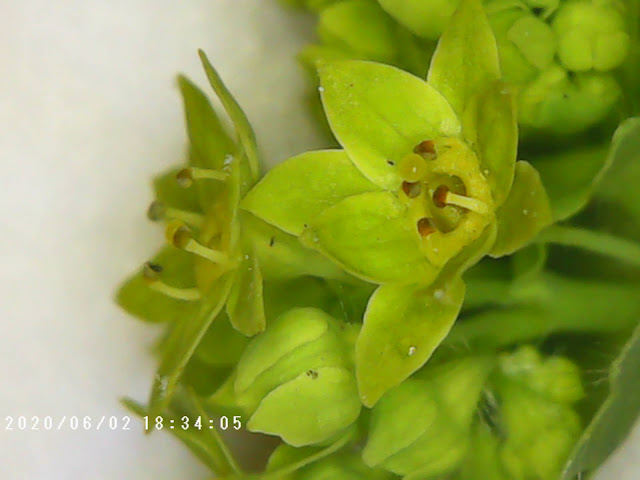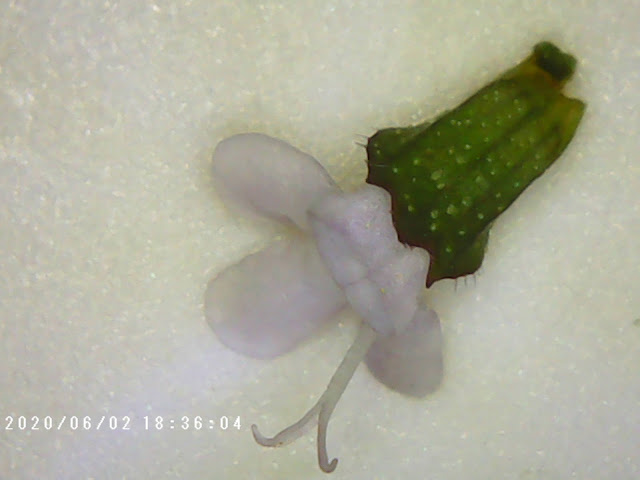Last year one of my birthday presents (!) was a digital microscope. I’ve always enjoyed using them since my days at the John Innes Institute in the 1970s when I used one to look at the stages of pollen development in anthers - particularly tobacco and Datura - part of our work on pollen culture.
The one I bought is a DM4. It has a 4.3” screen and a rechargeable battery so can be taken anywhere. Unfortunately it didn’t come with any instructions so to start I thought I would give you the benefit of my trial and error. It works like this:
DM4 Digital Microscope Instructions
Switch on: long press on ON button on right hand side.
Set time and other microscope features: short press MENU, then use arrows and OK button.
When you switch on it is in video setting.
To change to camera: long press on MENU
To review photos/videos: another long press on MENU
Press again to come back to video.
When in appropriate setting then press OK to record or take photo.
To stamp date & time on photo: in video setting press MENU (see photo) and select Time Stamp.
It is very easy once you’ve got the hang of it.
The cost was about 40. Well worth it I think and something children would enjoy using.
Today (2nd June 2020) I went round the garden looking for tiny flowers. Here are the results with one or two surprises.
FORGET ME NOT
This is a real favourite and self seeds all over the garden. It’s easy to pull out where you don’t want it.
 |
| Plant |
BORAGE - Borago officinalis
This also self seeded from last year’s plants. They are annuals.
 |
| Plant |
 |
| Middle of the flower; the blue anthers were a surprise |
 |
| The glandular hairs on the sepal are very obvious |
MOTHERWORT - Leonurus cardiaca
According to Culpepper this plant takes melancholy vapours from the heart and makes women joyful mothers of children. Not a very exciting plant to do all that but obviously worth cultivating. The tiny pink flowers don’t show up much on the plant but close up they are very exotic.
 |
| Plant |
 |
| Flower closeup |
ALPINE STRAWBERRY
This is a pretty plant which seeds around and produces edible fruit which are quite small.
 |
| Plant |
 |
| Centre of flower with unexpected visitor |
PROCUMBENT PEARLWORT - Sagina procumbens
We have two Sarracenia plants growing in a pot on the patio. Yesterday I realised there was something else growing at the base of each plant which must have been in the original pots when I bought them. An unusual feature is that it doesn’t have any petals, and a surprising number of very small seeds.
 |
| Plant |
 |
| The leaves have a tiny bristle only visible under the microscope |
BLACK ELDER - Sambucus nigra - ‘Black Lace’
A really beautiful tree especially when in bloom as it is at the moment.
 |
| Plant |
 |
| The anthers have released the pollen |
LADY’S MANTLE - Alchemilla mollis
A lovely acid green which looks great and lasts well in a vase.
 |
| Plant |
 |
| Magnified |
THYME
This enjoys living in the Paradise Garden. There are two big clumps of it.
 |
| Plant |
 |
| Flower closeup |
MOON DAISY - Leucanthemum
This grows at the end of the Secret Garden in part shade. It shows up well at dusk. A member of the Asteraceae with a complex flower head. Ray florets on the outside and little disc florets in the middle. There was another surprise little visitor, about 1mm long - possibly a thrip.
 |
| Plant |
 |
| Disc florets |
HAIRY TARE - Vicia hirsuta
Another wild flower that appeared in the garden. The flowers are very tiny and look white until magnified. Distinguished from the other tares as it only has 2 seeds in the pod.
 |
| Plant |
 |
| Flowers closeup |










0 comments:
Post a Comment